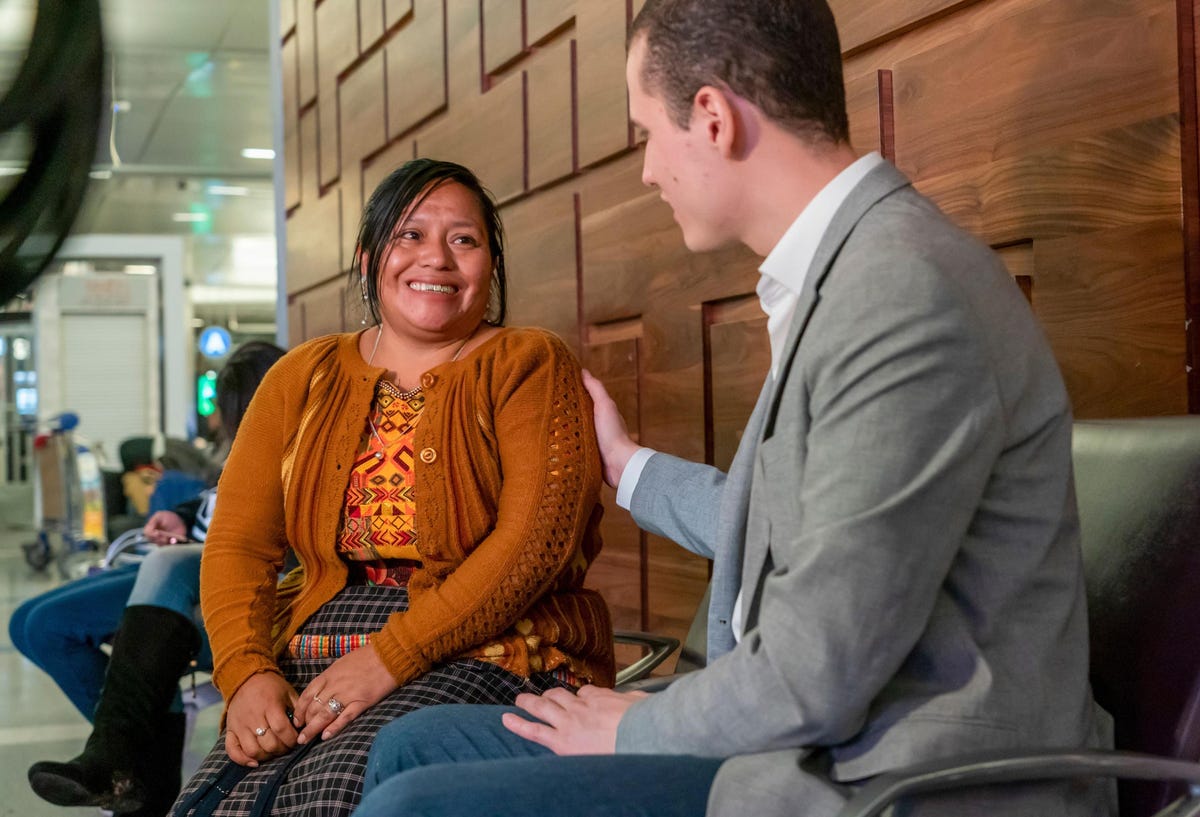
Leticia (left) is one of many ASAP members who is working to improve the U.S. asylum system. She … [+]
Asylum Seeker Advocacy Project (ASAP) supports families seeking safe haven in the U.S. after fleeing danger in their countries of origin. Having seen explosive growth in the last 12 months, it is now the largest membership organization of U.S. asylum seekers. We checked in with ASAP co-founder Swapna Reddy, a Chicago-based lawyer, technologist, and social entrepreneur to hear more about what the last year has been like and what’s ahead.
Ashoka: The Asylum Seeker Advocacy Project (ASAP) that you started in law school just reached 200,000 members. Tell me—who are your members?
Reddy: They are asylum seekers from all over the world who are now living in the United States. We have members in all 50 states and every U.S. territory. So if you live in the U.S., you probably live near an ASAP member! Our members are from 175 countries, with many coming from Venezuela, China, Guatemala, Haiti, Nigeria, and India.
Ashoka: A little over a year ago, ASAP had just 5,000 members. How did your membership grow so quickly?
Reddy: This is true! We began to grow exponentially in 2020. It really comes down to the organizing and leadership of our first members, who fought for the ability of asylum seekers to get a work permit and Social Security number. The Trump administration proposed rules that made it almost impossible for asylum seekers to work while their cases were pending. Our members were devastated by the news, so they organized and voted for ASAP to challenge this policy in court. In a twist of fate, the judge ruled that the Trump policies would go into effect for all asylum seekers unless they were a member of ASAP or the other membership organization on the case. Within a month, we went from having 5,000 members total to onboarding 5,000 new members per week. A year later we’re the largest organization of asylum seekers in the country.
Ashoka: How have asylum seekers benefitted from becoming ASAP members?
Reddy: We’ve gotten work permits and Social Security cards into the hands of over 125,000 asylum seekers. That’s 125,000 people who can work and feed their families. And there are 200,000 asylum seekers now plugged into legal resources, member services, and a community designed for—and with—them. Our members also advocate collectively. It’s a sense of having shared experiences and priorities that’s led to ASAP’s growth over the last year.
Ashoka: What are some of the most hopeful aspects of your recent growth?
Reddy: ASAP members are increasingly organized and engaged—this is wonderful to see. Asylum seekers get talked about a lot but rarely consulted for ideas. If we are to build a better asylum system, this dynamic needs to change, and we are changing it. ASAP recently polled our members and over 34,000 responded with their ideas. The result was the largest collective priority-setting of a group of asylum seekers in U.S. history, and a body of knowledge about what so many asylum seekers want and need. For policy makers and communities and city governments trying in good faith to improve the asylum process, this digest is a goldmine.
MORE FOR YOU
Ashoka: So ASAP supports members to take the lead on reform priorities?
Reddy: Yes. We believe it’s our job to provide asylum seekers with tools, not ideas—the ideas come from them. For that reason, we’re in continuous communication with all 200,000 of our members. We provide members with the resources they ask for, and we get their insights on how the asylum system should change. That is how we make decisions as an organization—we take the lead from our members and we work with them to achieve their goals. As with anyone, our members’ priorities depend on their personal circumstances, but they also depend on the political climate around asylum. We are always evolving and responding to significant challenges.
Ashoka: Has the government expressed interest in speaking with ASAP’s membership?
Reddy: Yes, the government has asked us to host meetings between asylum seekers and high-level U.S. immigration officials. For example, we recently coordinated a meeting between the Secretary of Homeland Security, Alejandro Mayorkas, and asylum-seeking families. It was historic—the first time that top U.S. immigration officials had spoken directly with a group of asylum seekers, not to their lawyers or advocates, about their experiences at the border and in immigration custody. It makes practical sense that if you’re looking to improve a process, you would want to hear from people going through that process, but this was the first time this direct exchange had happened so intentionally.
Ashoka: When there are difficult times, what motivates you most to keep going? Maybe that’s a different way to ask: why do you do this work?
Reddy: I am the daughter of Indian immigrants. My family has benefited enormously from the ability to move across borders. But we have also experienced hardships. My siblings and I have lived continents apart from each other, and many of my relatives have struggled with visas and immigration status in the U.S. This work is personal, and that is what keeps me going.
Ashoka: What’s next?
Reddy: We try not to set rigid expectations or plans, but instead build systems that are flexible and able to respond no matter what happens next. That requires a lot of focus on operations and systems—for example, we’ve needed to become a tech nonprofit basically overnight to meet the enormous demand. We’ve gone from hiring lawyers to hiring technologists! But whatever happens next, I am confident that 200,000 or a quarter million asylum seekers standing together, problem-solving together, are going to make incredible change to the asylum system and the country as a whole. We will win the future we want. And it’ll be asylum seekers leading the way.
Swapna Reddy is a cofounder of Asylum Seeker Advocacy Project and an Ashoka Fellow.







